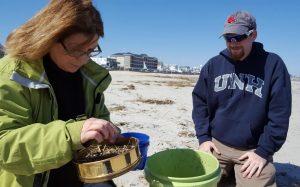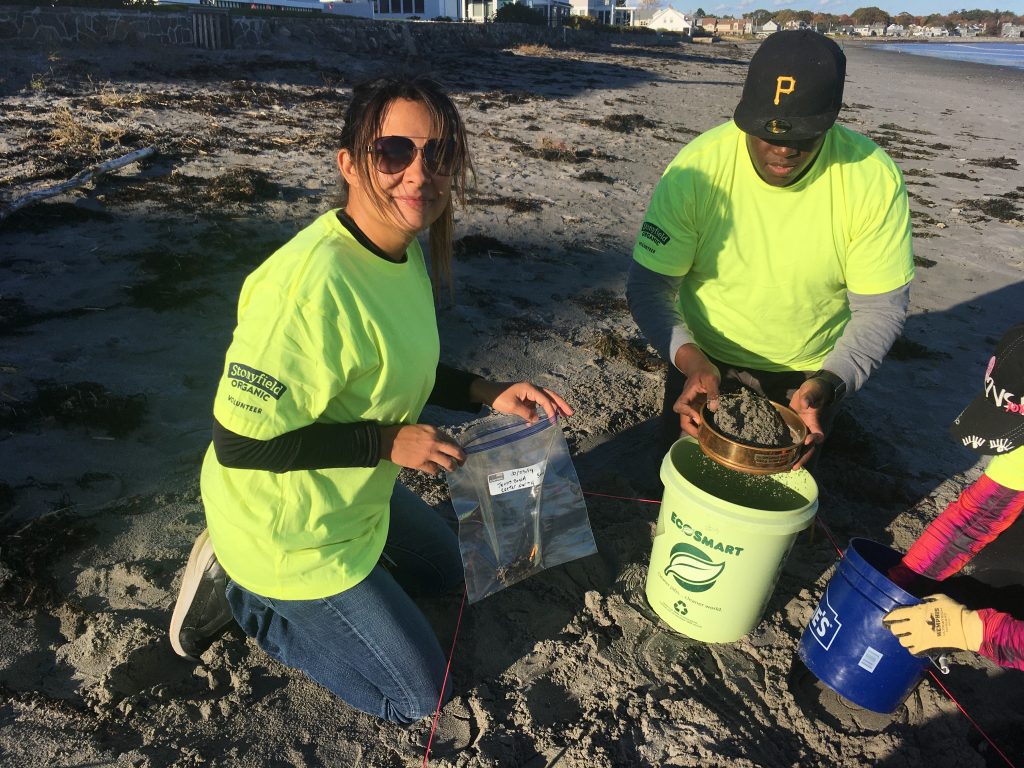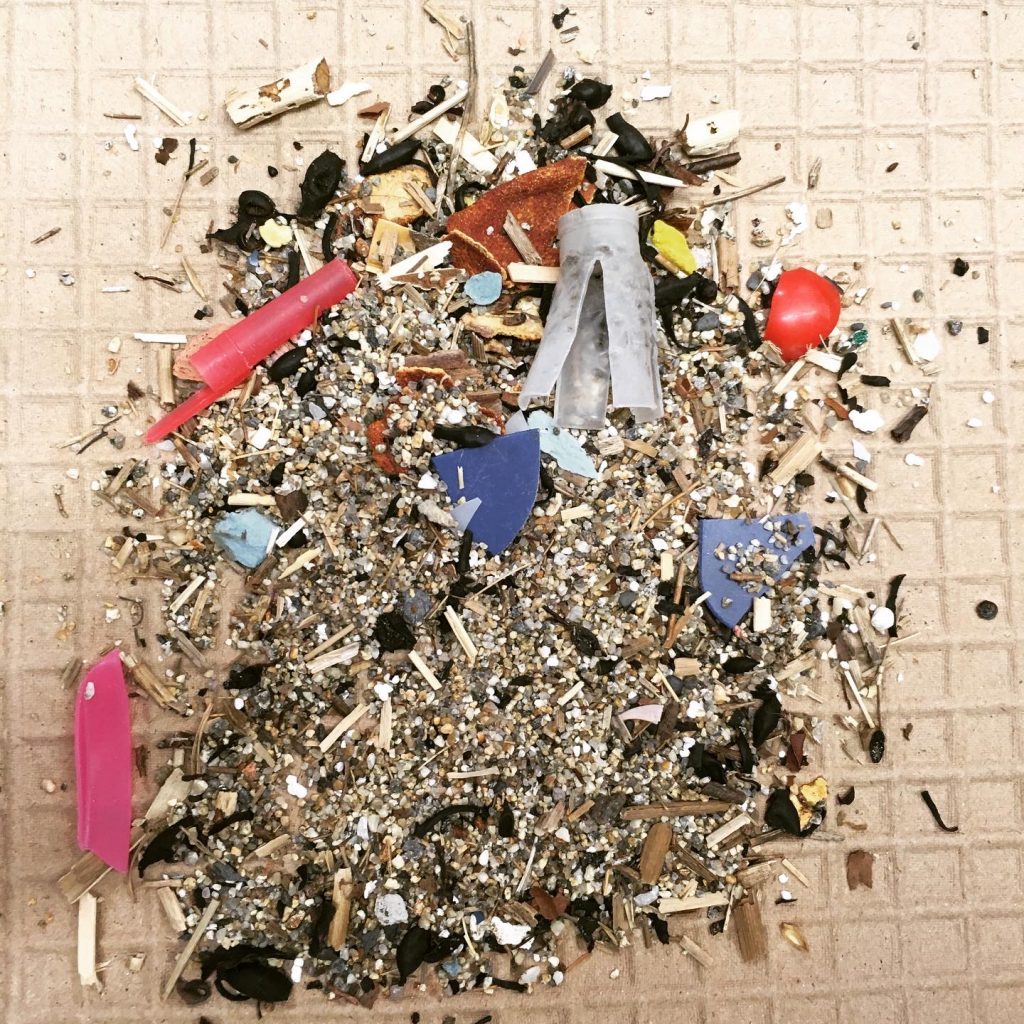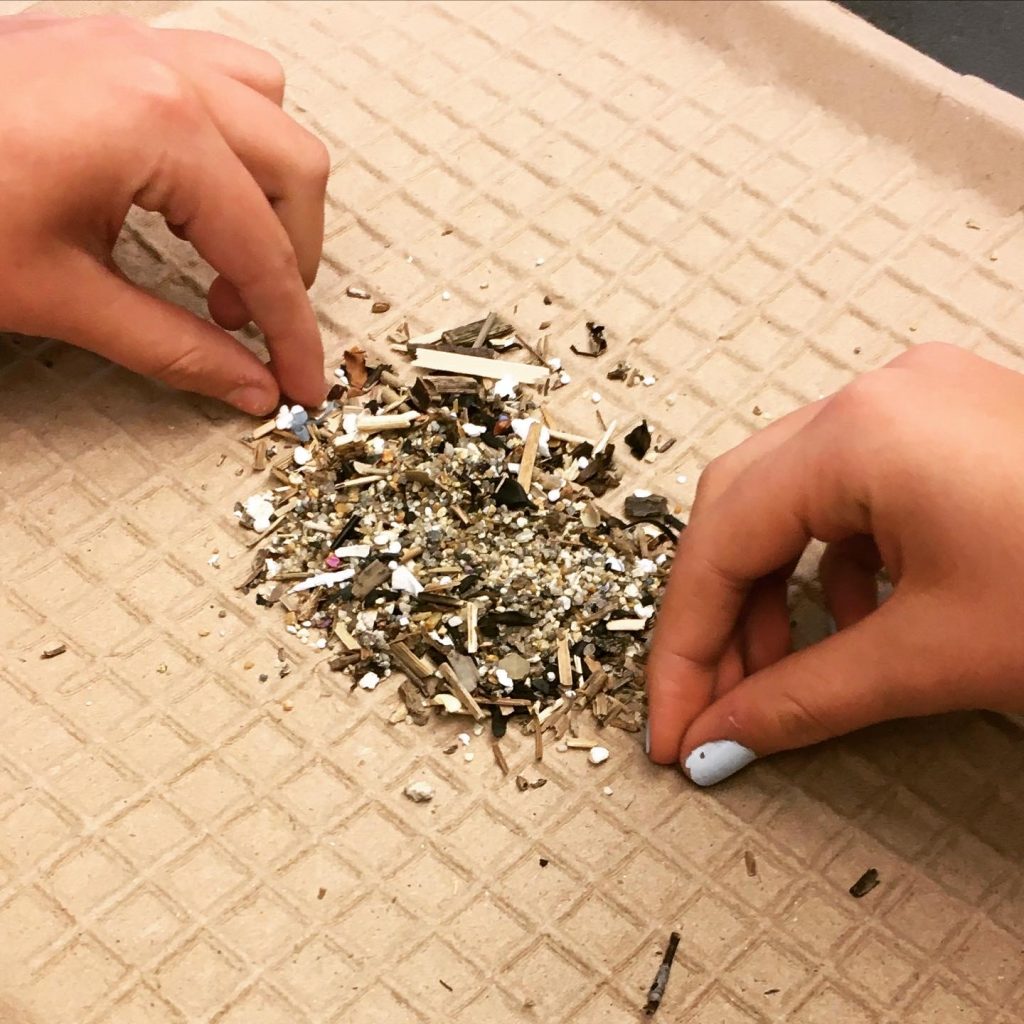 The macro debris on our beaches is obvious: it’s not hard to walk down a beach and pass by a forgotten can, flip flop or some lost fishing rope. But what about the smaller debris?
The macro debris on our beaches is obvious: it’s not hard to walk down a beach and pass by a forgotten can, flip flop or some lost fishing rope. But what about the smaller debris?
Since 2013, we’ve worked with University of New Hampshire Cooperative Extension and New Hampshire Sea Grant to study microplastics on New Hampshire beaches. Microplastics are defined as plastics between 1-5mm in size. They can include fragments of larger plastics such as bottles, films from straw wrappers, pieces of foam, and filaments of rope or synthetic fibers.
Our study involves collecting sand samples at several New Hampshire beaches from Rye to Seabrook, sieving them for plastics, and then sorting the plastics into various categories. We’ve learned that in addition to the large plastics on our beaches, there are small ones, too, with foams making up the largest percentage of microplastics across the beaches.
Click here to view our microplastics data
Take Action:
- Use less plastic. Discarded plastic breaks into smaller pieces, turning into microplastics and eventually even smaller pieces. These small pieces of plastics have been found in animals as tiny as zooplankton, and may have far-reaching impacts up the food chain.
- Pick it up! If you’re on a beach or road, pick up even the smallest litter you see.
- Volunteer: We can always use help with sampling in April-October, and sorting in the fall and winter each year!
Fill Out a Volunteer Application to Get Started



